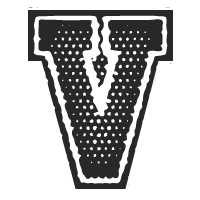The Waterboy
Contributing
Water
These
days, radio and TV commentators are talking more and more about the “spread”
offense. You hear about coaches wanting to go to more of a spread look, or at
least have a spread package in their offensive attack.
An
increasing number of high school and college teams are using some form of it,
including both teams in last year’s Class 5A state title game (Carmel and Pike)
and both teams in the last NCAA title game (LSU and Ohio State).
In this three-part series, we will examine
the main principles that make up the spread offense. This is by no means a
complete list of every idea or wrinkle used in the offense, but merely an
attempt to simplify things for the everyday fan.
What
is the spread?
What exactly is the spread offense, and why
has it become so popular? Before we go into what the spread is, we need to
first describe what it is not.
The spread is not one specific formation,
or even a particular set of plays. At the collegiate level, there are spread
running offenses (West Virginia, Florida), and there are spread passing
offenses (Texas Tech, Purdue).
The spread is not a gimmick offense. There
are plenty of teams that run traditional plays out of spread formations to gain
an advantage.
It is not a new scheme that was just invented
in the last few years – and, like most successful concepts in football, it was
not the brainchild of a single coach or team. The next segment will explain
why.
The
history of the spread
One of the earliest known instances where
spread concepts were used came back in 1935 when the game of football saw the
first of many great receivers in Don Hutson of the Green Bay Packers. At the
time, the popular offensive formation was something called the “T” formation.
(Every once in a while, an offensive coach will pull this out of his back
pocket, usually on the goal line.)
It was basically a two-tight end offense
with three backs in the backfield in the shape of a T – thus the name.
DB DB
LB LB
DB DB
DL
DL DL DL
DL
TE
O O
X O O
TE
QB
HB FB
HB
The “T” formation
Green Bay coach Curly Lambeau had the
brilliant idea of taking advantage of Hutson’s outstanding pass-catching
abilities and split him out wide, making Hutson one of the first true “wide receivers.”
This new alignment forced the defense to pull at least one (and usually two)
defenders out of the box, allowing Hutson to get the ball in space. This
maneuver forced defenders “outside the box” to open up more space to run the
football.
The Packers ended up winning the NFL championship
the following season, thanks in no small part to the prolific receiving skills
of Hutson.
DB LB LB DB
DL
DL DL DL
DL
WR O O
X O
O TE
QB
HB FB
HB
Hutson
split out in the “Split T”
Neither Hutson nor Lambeau knew it, but
they had changed the game of football forever.
Now let’s move to the early 1960s, where
the birth of the American Football League also featured the birth of the
vertical passing attack. Teams like the Oakland Raiders, San Diego Chargers,
and Buffalo Bills were playing with a new and exciting style.
Quarterbacks like Jack Kemp, Tom Flores,
and Darryl Lammonica played in an aggressive, attacking offense that placed an
emphasis on the big play. Contrast that with the “three yards and a cloud of
dust” style in the National Football League that was typified by Vince
Lombardi’s Packers.
One of the innovators of the new style was
San Diego head coach Sid Gillman, who added lots of motions, shifting, and a
variance of formations to confuse the defense. Needless to say, the Chargers
traditionally had a potent offense. The multiple formations and motions used by
the Chargers allowed them to virtually dictate to the opponent what fronts and
coverages they could use.
This was another early spread concept,
using formations and motions to get your opponent out of his comfort zone.
One of Gillman’s earliest assistants was a
very good student, and he combined the concepts he learned in San Diego with
philosophies he took from Oakland under Al Davis as well as quick passing-game
notes from the great Paul Brown. This young coach finally added in a few of his
own ideas and eventually landed in San Francisco.
This coach’s name was Bill Walsh, and he
would go on to be one of the most innovative and successful coaches in football
history.
Walsh’s “West Coast Offense” was not really
a spread attack to start out with. The coach limited the amount of multiple-receiver
sets used in the offense, partly because of philosophy but mostly because
running backs like Roger Craig had hands just as good as the receivers on the
team. The 49ers also did not use the shotgun formation because Walsh did not
like the possibility of a bad snap over the QB’s head.
With the new offense came concepts that
future spread coaches took as their own. Walsh continued to use formations and
motions to his advantage, running the same plays out of different looks to keep
the defense off-balance.
Another thing that made the Niners’ offense
so dangerous was that every person who was not an offensive lineman was a
threat to catch the ball and make a run after the catch. Halfback Roger Craig
became the first player to ever earn 1,000 yards both rushing and receiving in
the same season in this offense, a feat matched only by Marshall Faulk several
years later.
The old saying that necessity is the mother
of invention was proved true when offenses were forced to use more three- and
four-wide receiver sets. This was brought on because of two primary factors:
(1) The popularity in the 1980s and early ’90s of the run-and-shoot offense,
and (2) the invention of the zone blitz.
The run-and-shoot was a pass-happy offense
that used multiple-receiver sets to spread out defenses and let the QB and
receiver make split-second decisions based on the coverage. While the pure form
of the offense has all but died out (with the exception of coaches like former
Hawaii and current Southern Methodist mentor June Jones), many of the spread
concepts have lived on with the spread passing games that are currently out
there.
Also, the popularity of the zone blitz in
the early ’90s forced the offense to spread out the defense. A zone blitz drops
defensive linemen into short zones “underneath” that have been vacated by
blitzing linebackers and safeties. In essence, it allows the defense to send
pressure from just about anywhere, while keeping seven or eight back in
coverage.
When the offense was in a standard
two-receiver, two-back, one-tight end set, the defense did not have to worry
about covering the whole field and could give more exotic looks. By spreading
the defense from sideline to sideline, however, defensive coordinators were
forced to declare where the pressure was coming from.
Finally, with the increase in more-athletic
quarterbacks in college football, coaches wanted to get defenders out of the
box to open up the running game for the quarterback and tailback in the option
game. Thus, the “spread option” was born.
That brings us to today, where the spread
is used by most teams in one form or another. Before we’re done, let’s review
the basic concepts used in the spread.
Concept
#1: Spread ’em out
The first, and most important, concept used
in the spread is pretty self-explanatory: Spread out the defense to get your best
athletes out in space where they can make things happen with the football. This
is also useful for stretching out zone defenses so the offense can more easily
find the seams and creases in between defenders. It also allows the QB to get a
good look at who is covering whom, and it certainly makes it easier to
distinguish between man-to-man and zone coverage.
Concept
#2: Use formations and motion to dictate to the opposing defense
This is very important to understand
because, from a defensive perspective, formations determine how a defense will
line up and, in some cases, what coverage they will use. If you can give the
defensive coordinator a look he has not seen before, you will force him to
adjust – sometimes in a way that’s to your advantage. Using motion also allows offensive
coordinators to match up their athletes the way they want and, in some cases,
against their choice of defender.
Concept
#3: Every eligible receiver is a threat to catch and run with the ball
It was a requirement by Bill Walsh that any
tight end, tailback, or fullback, in addition to the established receivers, had
to have great hands. This forced defenses to play honest, knowing that they
couldn’t key on one specific player. This also gives offensive coaches great
flexibility in play-calling. Of course, it really helps if you have players
good enough to execute at a high level.
Concept
#4: Get defenders out of the box to open up space for the run
This is critical to the success of the
running attack. Many times there is only one back in the backfield in addition
to the quarterback, so there is often no blocking back or fullback to lead the
way. Therefore, the fewer defenders between the tackles, the better. The option
game is also effective because the defender being optioned is one less person
the line has to block, resulting in a numbers advantage for the offense where
there may be the same number of offensive and defensive players in the box.
Concept
#5: Force the defense to cover every inch of the field
This may seem redundant after the first
concept talked about spreading the defense out with formations. Even if the
offense lines up in multiple-receivers sets with the wideouts lined up all the
way to the sideline, however, if the offense never involves them in the game
(i.e. quick passes, screens, etc.), the defense will ignore them and put more
defenders in the box to stop the run, making it tougher to achieve offensive
balance.
A spread offense must have the ability to
pass or run to any point on the field. Without the plays and schemes to take
advantage of matchups, the offense is better off lining up in a traditional
two-back, two-receiver, one-tight end set and running it up the middle.
Conclusion
I hope this explanation of the spread was
helpful and interesting to the football fans out there. Stay tuned to
HoosierAuthority.com for the next installment, when I will talk about the
spread running game.
Did they get it right?
Share your thoughts on our Football message board.

















































 Processing your request, Please wait....
Processing your request, Please wait....
